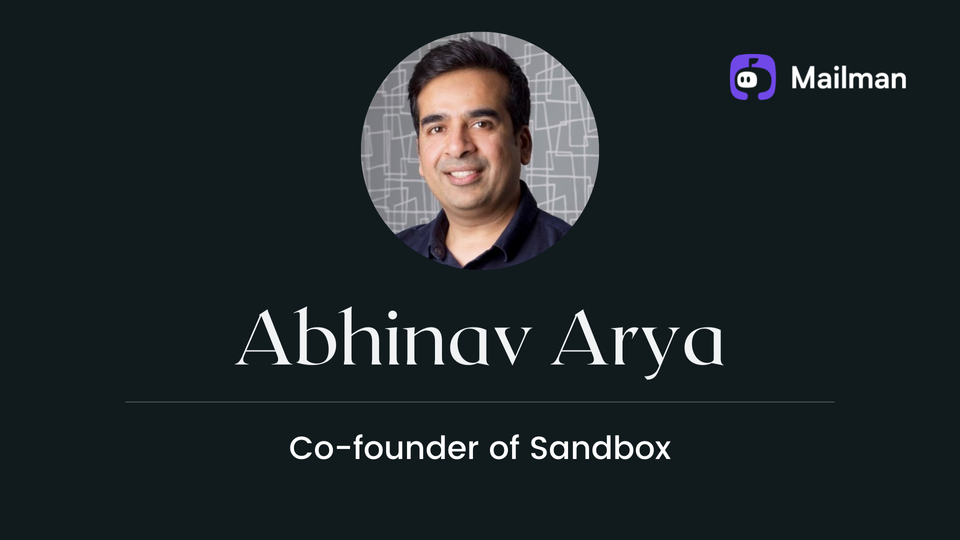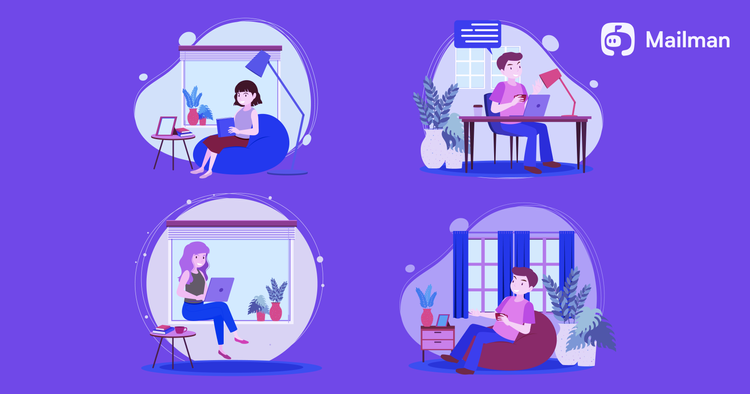How to have fewer meetings & emails?

How many meetings do you have in a day? 2 or 3 or god forbid, 6? And how many emails do you get in a day? Let's not even get to that number.
The point is, we're spending an increasing % of our work hours inside our inbox and attending meetings. But are all these meetings and emails necessary? Is there a way to have fewer meetings to get more work done?
Abhinav Arya of Sandbox believes there is. He has reduced his meetings to a maximum of 2 per day and checks his email only 3 times a day. As a result, he only spends ~2 hours in meetings or in his inbox on any given day. The rest of the day he can work on creative things with full focus.
But how did he achieve this? Let's hear it directly from him.
"As a company, we are now focused on setting roadmaps and KPIs, to create a better vision for we are headed and avoid a lot of to and fro within the team.
Some more changes I've brought in are, I don't schedule more than 2 meetings on a given day. Another big one is I only check my email thrice a day, Mailman has helped me build this habit.
Besides, I stopped having a lot of 1 to 1s with the team. We created a dashboard, put up all the KPIs and I could just check that without disturbing everybody. If something requires action, we'll talk. Otherwise, we don't.
Overall, now I've fewer calls, less email checking, and better productivity"
It is clear that setting the right processes at work can do wonders in reducing a lot of meetings/emails that could easily be avoided.
In this episode, Abhinav also shares his story, how does a typical in his life look like, how learning can be made fun using gaming, how he stays productive, what he does in his free time and what he would do if he found an extra hour's energy in his day.
Let's dive in!

Abhinav introduces himself
Hi, I'm Abhinav Arya, the founding partner at a company called Sandbox. It's a learning company that operates and invests in multiple companies in the learning and gaming sector. In the business, we have 3 verticals, kids, gaming, and learning. Kids vertical is focused on kids aged 0-5yrs. The gaming vertical is focused on every product that's gaming-related. Learning vertical is focused on digital learning media.
I operate on the investing side of things and also act as the CEO of the gaming vertical.
How do learning and gaming tie into each other?
During my stint at Pearson, one of the world's leading education company, I learned that learning can be enhanced by 2 factors: quality of teaching and time on task.
At Sandbox, we aim to provide the best teaching resources to ensure the quality of teaching is high. To increase the time on task, we use gaming to make learning fun and engaging.
For example, we built a dart game for kids to help them with their math skills. All they had to do was throw darts and then count the score themselves, the computer wouldn't do the calculation for them. If they add up their score correctly, they get another chance to play. If not, they've to give it to the other player. You can see how learning addition has suddenly become exciting, fun, and rewarding for the kid. They no longer have to do it on paper and pen. Now they can learn while they play.
His beginnings.
I started my entrepreneurial journey when I was 11. That's when I learned to code. Started making small software for friends and family. Then I moved into engineering after which I ran my own digital agency. Then I got fascinated by the product side and created a product.
After that, I moved to the UK, did my MBA. Then I worked in P&G, Cadbury (oh yes, the chocolate company). Following that my journey led me to Pearson. That's kind of my journey in short.
But at Pearson, I saw a gap in consumer need and what the traditional companies were delivering. Traditional companies were going to schools selling products and services, missing out on the software aspect of education. So we (my partner & myself) thought if we could somehow combine media and learning, it'll increase the learning appetite for students. We started investing and even acquiring companies working at the cusp of media and education.
Right now, we are working to keep investing and acquiring more companies working in the same space while improving our existing reach of around 50 Million active users for our gaming tools and platforms. That's our focus at this moment.
A typical day
Typically I get up latest by 6, most days I'm up at around 5, depends on when the body alarm goes off. Then I loiter around for a while to get into the mood for some meditation, yoga, and stretching. I do this for 30 minutes every day. Then I spend some time watching the news or something interesting on YouTube. Then breakfast and spending some time with my kids.
At around 8:30 I start gravitating towards my laptop. Before that, I don't even touch my phone or laptop. I try to wrap my day by 6 PM. After which I indulge myself in activities in which I don't have to go back to my laptop. Like going for a run or spending time with family, basically trying to tire myself up.
I'm gravitating towards bed by around 9:30 and by 10 I'm asleep.
Not being a slave to emails/meetings
Firstly, let me accept I do get distracted a lot. Every 10 mins I'm tempted to browse something. It happens a lot. But I'm definitely doing it a lot better now than I used to before Covid. I used to be an email slave, checking my inbox every 2 minutes. I started working to change that during Covid when we were all stuck. As a company we focused on setting roadmaps and KPIs, to create a better vision of where we are headed and avoid a lot of to and fro within the team.
Some more changes I've brought in are, I don't schedule more than 2 meetings on a given day. Another big one is I only check my email thrice a day, Mailman has helped me build this habit.
Besides, I stopped having a lot of 1 to 1s with the team. We created a dashboard, put up all the KPIs and I could just check that without disturbing everybody. If something requires action, we'll talk. Otherwise, we don't.
I also started to focus on 1 thing for a day. So if I'm working on product today, I'll only work on product and not think about marketing. Tomorrow if I work on marketing I'll not think about working on the product.
Overall, now I've fewer calls, less email checking, and better productivity. I only spend 2-3 hours a day on operational work and I have the rest of the time to work on whatever I want.
Microlearning on Twitter
I use Twitter as a way to learn. I feel it's better to learn from Twitter than to enroll in a course and be locked in a room/call with a lot of information being thrown at you. Twitter lets you learn in tiny bits. It's microlearning but it's still highly valuable.
I also feel I remember these micro learnings much better than I would remember learnings from a course, as on Twitter there are constant reminders of learnings on your feed and they keep showing up when different people tweet about it. That helps in knowledge retention.
Utilizing free time
Whenever I've some time left before a meeting starts or I want a break, I just go to the kitchen to talk to my wife about family and stuff. I do that about 4-5 times a day. It's a good way to maintain the family and work balance.
One extra hour
I feel I'm doing okay on the hours and don't feel the need for an extra one. But let's say I get an extra hour in terms of energy. I would spend that extra hour of energy on learning and improving my leadership skills. Better quality of communication, learning, and implementing a good culture and things of that nature.
How to reach Abhinav?
I'm at abhi@sandboxandco.com. You can also follow me on Twitter, although I don't tweet a lot.





